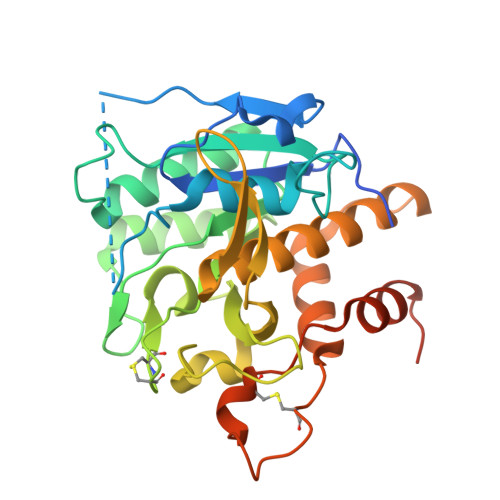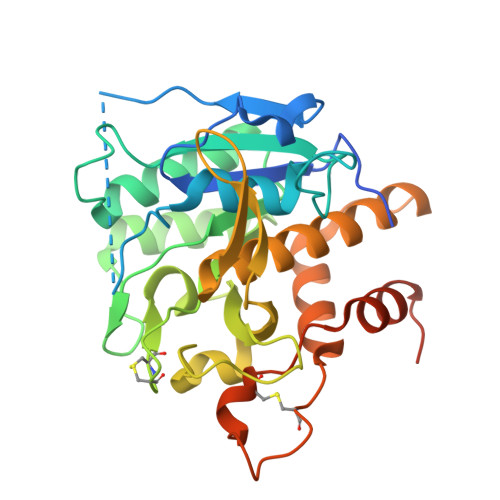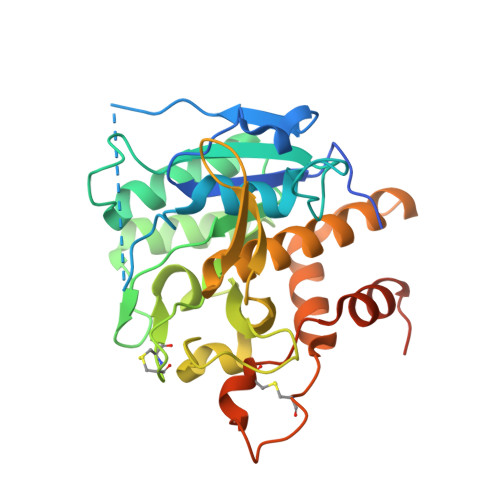Structures of cyanobactin maturation enzymes define a family of transamidating proteases.
Agarwal, V., Pierce, E., McIntosh, J., Schmidt, E.W., Nair, S.K.(2012) Chem Biol 19: 1411-1422
- PubMed: 23177196
- DOI: https://doi.org/10.1016/j.chembiol.2012.09.012
- Primary Citation of Related Structures:
4H6V, 4H6W, 4H6X - PubMed Abstract:
Cyanobactins, a class of ribosomally encoded macrocylic natural products, are biosynthesized through the proteolytic processing and subsequent N-C macrocylization of ribosomal peptide precursors. Macrocylization occurs through a two-step process in which the first protease (PatA) removes the amino terminal flanking sequence from the precursor to yield a free N terminus of the precursor peptide, and the second protease (PatG) removes the C-terminal flanking sequence and then catalyzes the transamidation reaction to yield an N-C cyclized product. Here, we present the crystal structures of the protease domains of PatA and PatG from the patellamide cluster and of PagA from the prenylagaramide cluster. A comparative structural and biochemical analysis of the transamidating PatG protease reveals the presence of a unique structural element distinct from canonical subtilisin proteases, which may facilitate the N-C macrocylization of the peptide substrate.
Organizational Affiliation:
Institute for Genomic Biology, University of Illinois at Urbana Champaign, Champaign, IL 61820, USA.
















